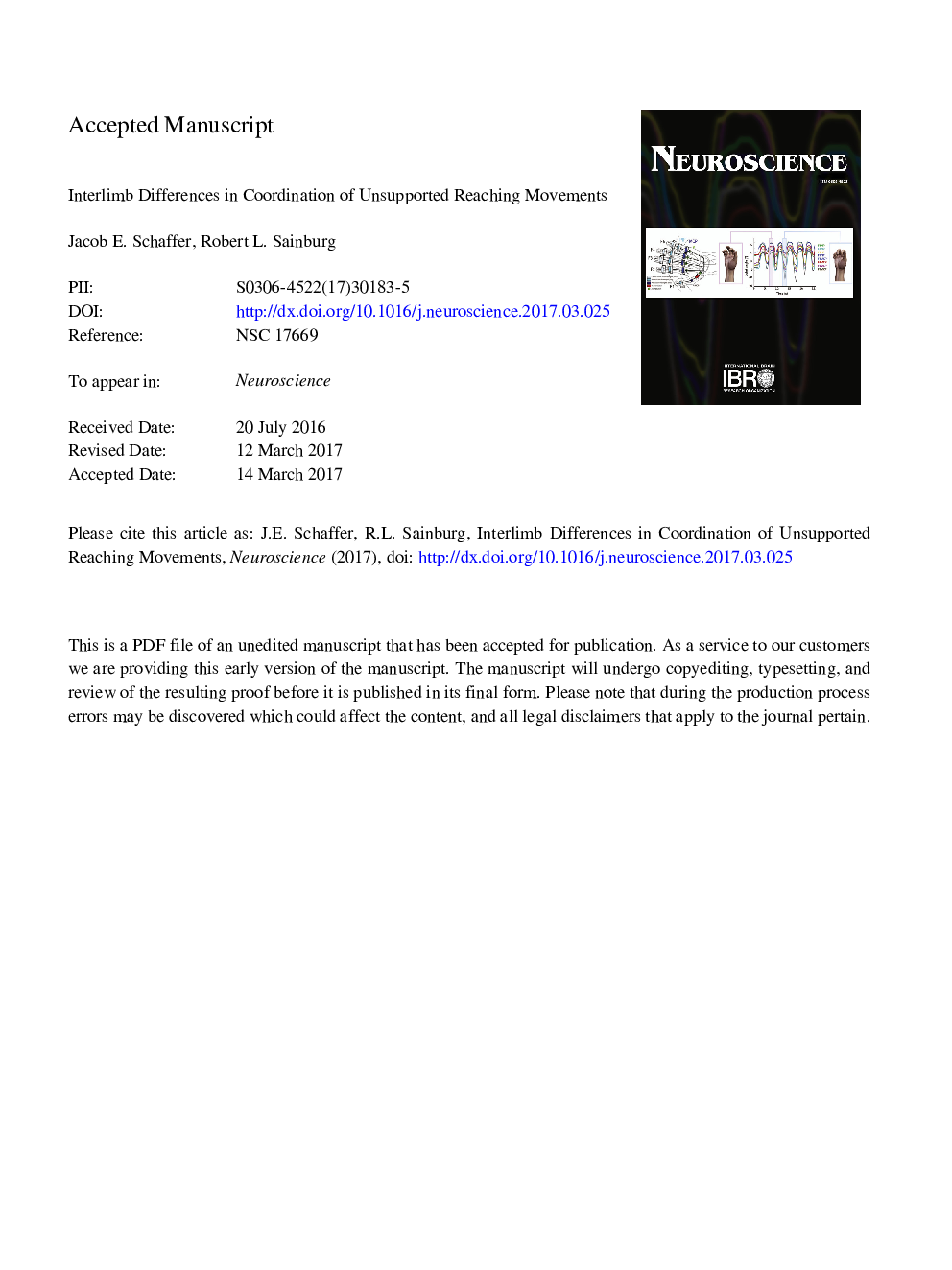| کد مقاله | کد نشریه | سال انتشار | مقاله انگلیسی | نسخه تمام متن |
|---|---|---|---|---|
| 5737687 | 1614726 | 2017 | 38 صفحه PDF | دانلود رایگان |
عنوان انگلیسی مقاله ISI
Interlimb differences in coordination of unsupported reaching movements
ترجمه فارسی عنوان
تفاوت های بین اینترمب در هماهنگی حرکات دست نیافتنی
دانلود مقاله + سفارش ترجمه
دانلود مقاله ISI انگلیسی
رایگان برای ایرانیان
کلمات کلیدی
موضوعات مرتبط
علوم زیستی و بیوفناوری
علم عصب شناسی
علوم اعصاب (عمومی)
چکیده انگلیسی
Previous research suggests that interlimb differences in coordination associated with handedness might result from specialized control mechanisms that are subserved by different cerebral hemispheres. Based largely on the results of horizontal plane reaching studies, we have proposed that the hemisphere contralateral to the dominant arm is specialized for predictive control of limb dynamics, while the non-dominant hemisphere is specialized for controlling limb impedance. The current study explores interlimb differences in control of 3-D unsupported reaching movements. While the task was presented in the horizontal plane, participant's arms were unsupported and free to move within a range of the vertical axis, which was redundant to the task plane. Results indicated significant dominant arm advantages for both initial direction accuracy and final position accuracy. The dominant arm showed greater excursion along a redundant axis that was perpendicular to the task, and parallel to gravitational forces. In contrast, the non-dominant arm better impeded motion out of the task-plane. Nevertheless, non-dominant arm task errors varied substantially more with shoulder rotation excursion than did dominant arm task errors. These findings suggest that the dominant arm controller was able to take advantage of the redundant degrees of freedom of the task, while non-dominant task errors appeared enslaved to motion along the redundant axis. These findings are consistent with a dominant controller that is specialized for intersegmental coordination, and a non-dominant controller that is specialized for impedance control. However, the findings are inconsistent with previously documented conclusions from planar tasks, in which non-dominant control leads to greater final position accuracy.
ناشر
Database: Elsevier - ScienceDirect (ساینس دایرکت)
Journal: Neuroscience - Volume 350, 14 May 2017, Pages 54-64
Journal: Neuroscience - Volume 350, 14 May 2017, Pages 54-64
نویسندگان
Jacob E. Schaffer, Robert L. Sainburg,
